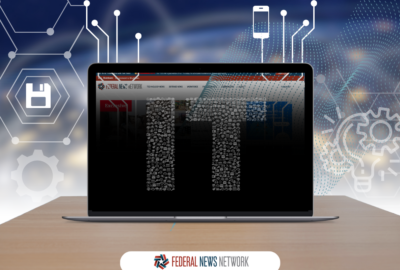HHS pushes for artificial intelligence and behavioral health data
"This program addresses fast emerging challenges that inhibit the development use and advancement of interoperable Health IT," said Alison Kemp.
The Health and Human Services department has identified two new priorities. One is improving data used for artificial intelligence. Another is better use of information technology in the delivery of behavior health services. The National Coordinator for Health Information Technology office recently made a series of small awards towards these goals. Public Health analyst Alison Kemp joined the Federal Drive with Tom Temin with more details.
Interview transcript:
Tom Temin Tell us about this program. This is coming under something called LEAP. What is LEAP? And then we’ll get into the priorities that you have funded here.
Alison Kemp Yes. LEAP stands for Leading Edge Acceleration Projects. And so then the whole title is the Leading Edge Acceleration Projects in Health IT. And this program addresses fast emerging challenges that inhibit the development use and advancement of interoperable Health IT. The projects tackle the creation of new standards, methods and tools to improve care delivery and advance research capabilities.
Tom Temin Ok. So $2 million, small money really in HHS terms. And these were grants or were these challenge competitions? What was the funding mechanism here?
Alison Kemp These are grants and they’re specifically cooperative agreements. And I know you mentioned that these are small awards, but these recipients are often very large awards.
Tom Temin Sure. And one of them has to do with the idea of improving the data that goes into artificial intelligence use in the health care field. What is the issue here and what are you trying to get out of these grantees?
Alison Kemp Yes. So for that area of interest, we awarded to Columbia University. And their project is focusing on harnessing nursing knowledge in a systematic way to better capture the nuances of nursing data leading to more comprehensive, accurate and transparent algorithms.
Tom Temin Nursing knowledge. What is the special knowledge that nurses have that needs to be maybe captured in some way.
Alison Kemp In their application they explained how nurses often do so much more documentation than other providers during a care visit. And so the nurses may have a much better idea of the care that a patient is receiving. And so their project is proposing using the data that nurses are collecting in algorithms, which is a new area that that’s not often the data that is used in algorithms, in artificial intelligence.
Tom Temin Sure. So just to make a typical scenario, someone has specialized surgery, and maybe if you’re lucky, you’ll see that surgeon one more time, two more times while you’re recovering. The nurses see a person every hour, and they have a sense of the totality of what the person’s going through. Unlike the surgeon who says this two inch square area is good to go.
Alison Kemp Yes, that’s correct. And so one of the things that they’re looking to consider in this project is whether data in a patient’s health care record is missing or if the care was missed. And so they’ll be interviewing lots of nurses as part of this project to discuss what the traditional flow of care is. So step one, step two, step three, and then maybe step four isn’t recorded, does that mean that it just wasn’t recorded or does that mean that step four didn’t happen? And so they’ll be talking through all of these processes to determine whether or not the care was missed or the care wasn’t written down.
Tom Temin And is the idea eventually that nurse created and captured data would be better for artificial predictive models?
Alison Kemp Yes, that’s what they’re thinking, because like what you said, a doctor might see a patient just 1 or 2 times or for a short amount of time. But the nurses seeing the patient so many more times.
Tom Temin Interesting. So we’re speaking with Public Health Analyst Alison Kemp from the Office of the Assistant Secretary for Technology Policy at Health and Human Services. And your other grant is for the idea of furthering health information technology in behavioral health. What’s going on here?
Alison Kemp With behavioral health, there is a lot of differences between seeing a behavioral health provider and seeing any other type of provider. So they don’t participate in Health IT incentive programs such as those under CMS. So they can be lagging in Health IT that they have available. So this project is really looking to improve that for their patients. And so this award was to the Oregon Health and Science University. And their project is focusing on adapting a tool that has followed some HL7 standards that’s called the Multiple Chronic Condition Care Plan tool. And they will be using it at behavioral health clinics that are not attached to physical health sites. And so they will do a lot of evaluation of this tool and then share those results with the sites, the patients and stakeholders. And they are considering three scenarios as part of this tool. So they will be looking at longitudinal care planning for patients with complex physical and behavioral needs, and then monitoring mood disorders with structured patient reported outcome measurements and adapting care plans at unplanned traditional transitions of care. So such as like on hospital discharges.
Tom Temin One question is behavioral health and mental health, are those interchangeable terms?
Alison Kemp People often use them interchangeably. But I think behavioral health is often more like whole body care, and mental health is a little bit more specific.
Tom Temin Sure. Above the shoulders and then everything else, well, I guess it could be above the shoulders in both cases as well as below in the one case. And so it sounds here like the goal is to bring more orderly processes to evaluating people and creating care for them, than has been the case in this branch of health.
Alison Kemp This program specifically is really exciting, because they’re already using a tool that has been created, so they’re going to be piloting it in some new scenarios. So it will really further work that has already been started as part of the standards community.
Tom Temin And you mentioned, I think it was HL7 Tool?
Alison Kemp Yeah. HL7.
Alison Kemp Yes, it’s a standards based community for health IT, and there’s lots of groups working on different types of projects and part of HL7 has developed this tool that they’ll be using in this project.
Tom Temin And for HHS you will be getting research results from these two institutions. How will you promulgate that throughout the industry at some point?
Alison Kemp For many of our lead projects, we do have blog posts written on ASTPs buzz blog. And then we also have the tools posted on ASTPs is GitHub, which is a repository for all kinds of different technology tools. And so people who are interested in the tools that have been developed as part of the LEAP program can go to ASTPs GitHub to access the tools.
Tom Temin Right. So in other words, you put the research into the public domain essentially.
Alison Kemp Yes, exactly.
Tom Temin And what are the timelines? How long will it take till, for example, the HL7 tool could be effective in behavioral health?
Alison Kemp We start with two years for each of these projects. So it is possible that they could receive up to five years of funding. But each project starts with two years of funding. And so usually the second year of these awards, the project teams are finishing up the development of the tool and then working on the evaluation. And so by the end of the second year, we should have a tool available to the public.
Tom Temin And on the earlier tool that we talked about or the earlier project to get the nursing data in some organized manner, it sounds like the kind of thing nurses might have been clamoring for decades. Listen to us.
Alison Kemp Yes, it sounds like that they have been working on this project in other forms for many years, and really trying to get people to understand how important that the data that they are collecting can be.
Copyright © 2025 Federal News Network. All rights reserved. This website is not intended for users located within the European Economic Area.
Tom Temin is host of the Federal Drive and has been providing insight on federal technology and management issues for more than 30 years.
Follow @tteminWFED






